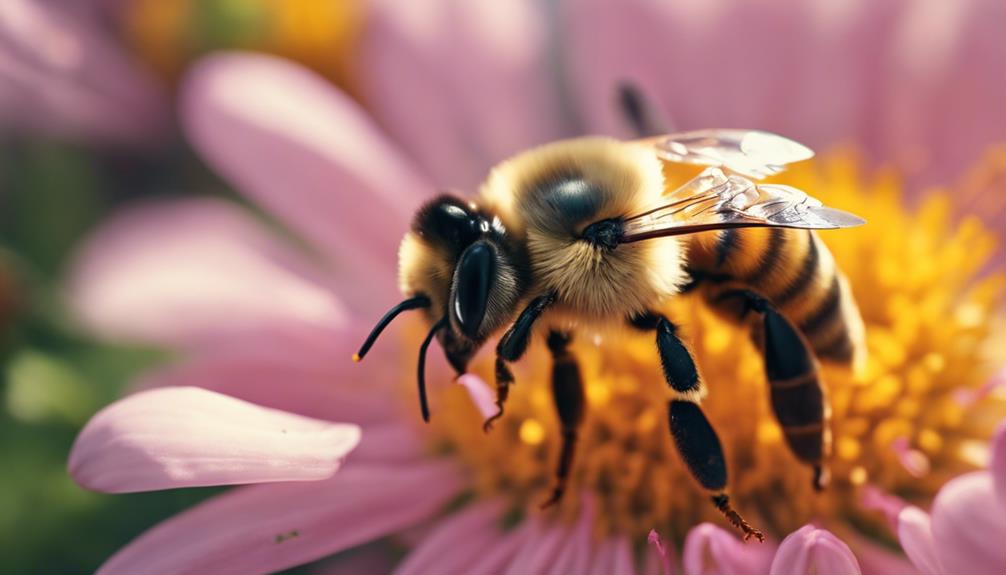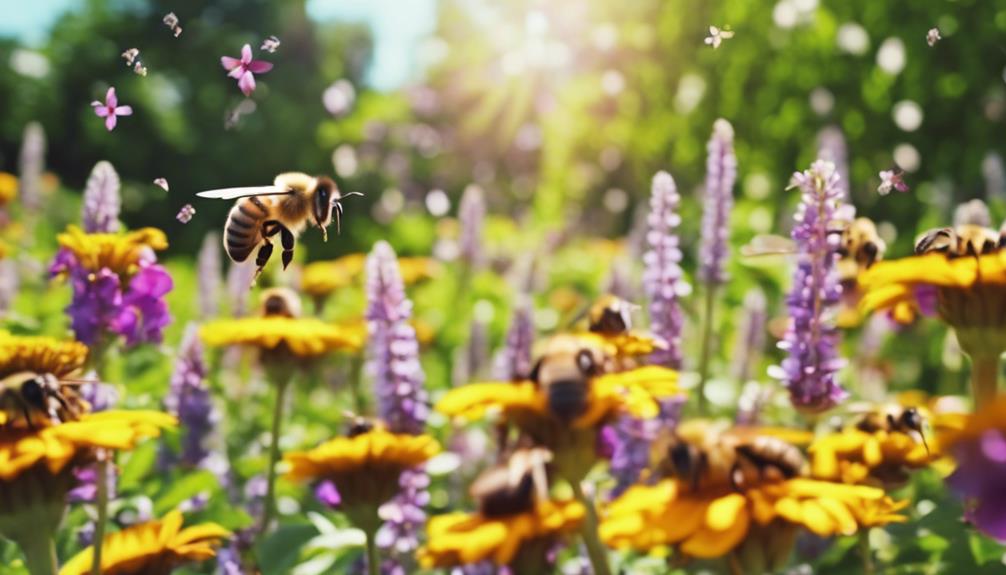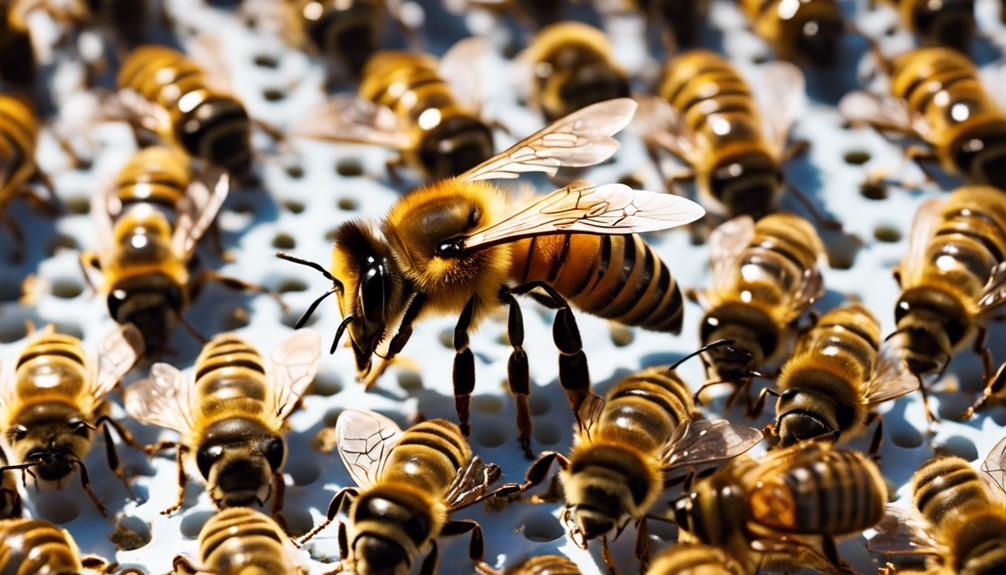In a beehive, a laborer bee is a type of honey bee. They are the female bees, the foundation of the hive, working tirelessly to maintain its prosperity and survival. These bees have a short lifespan of about 5 to 7 weeks on average, shifting from cleaning tasks to foraging duties. Worker bees are essential for the hive’s well-being, engaging in vital activities like caring for the brood, foraging for resources, and protecting the hive from intruders. Their dedication to colony tasks over personal needs highlights their importance in the intricate world of bees. If you’re curious to learn more about the intricate roles of worker bees within the hive, keep exploring this fascinating ecosystem.
Main Points
- Worker bees are female honey bees responsible for various tasks in the hive.
- Although worker bees are honey bees, not all honey bees are worker bees.
- Worker bees play essential roles in hive maintenance, unlike other types of honey bees.
- Worker bees are crucial for pollination and honey production in the colony.
- Both worker bees and honey bees are integral to the hive’s success, with distinct functions.
Differences Between Worker Bees and Honey Bees
In comparing worker bees and honey bees, we notice distinct differences in their roles and responsibilities within the hive. Female worker bees, unlike the queen bee and drone bee, are the backbone of the hive, tirelessly performing tasks important for its survival.
Nurse bees dutifully care for the brood, while forager bees venture out to collect nectar and pollen, utilizing their pollen baskets to transport these essential resources back to the hive. Worker bees also maintain the hive’s hygiene, ensuring a clean and healthy environment for all inhabitants.
The queen mandibular pheromone she secretes helps regulate the colony’s behavior, while drone congregation areas play a key role in mating. Each role, from nursing to foraging, contributes to the hive’s intricate balance and success.
Characteristics of Worker Bees
Worker bees, as female honey bees, play pivotal roles in the hive’s function and success. These hardworking ladies are the backbone of the colony, taking on various tasks to guarantee everything runs smoothly. From hive maintenance to resource collection, worker bees are always on the go, buzzing around and making sure their home is in top shape.
Despite being infertile, they’re essential for the colony’s prosperity. Throughout their lifespan, which ranges from 5 to 7 weeks on average, some might even live longer if conditions are just right, up to 6-8 months. Their roles shift as they age, starting with cleaning and nursing duties before venturing into the world of foraging, gathering nectar and pollen to keep the hive thriving.
Importance of Worker Bees in a Hive
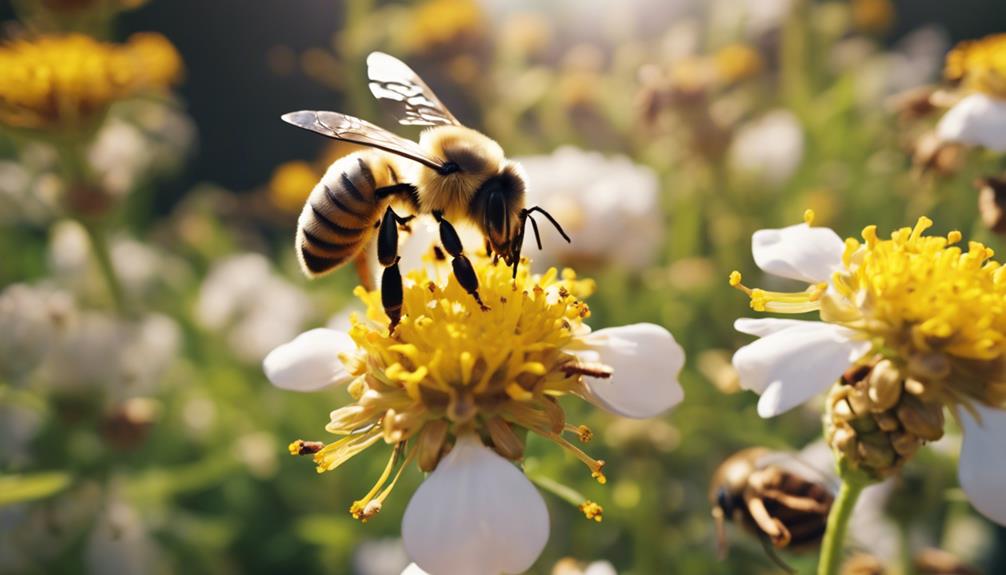
Playing pivotal roles in the hive’s function and success, female honey bees known as worker bees are essential for ensuring the colony thrives.
- Worker bees engage in cleaning cells to maintain a hygienic environment for the hive.
- They diligently nurse the brood, ensuring the young bees are well cared for and nurtured.
- Foraging for resources, worker bees gather nectar, pollen, and water to sustain the colony.
- Guarding the hive against intruders and predators, they protect their home with dedication.
- Through their altruistic service, worker bees selflessly prioritize colony tasks over personal needs, embodying the essence of teamwork in the hive.
Worker Bee Vs. Honey Bee Roles
Having established the significance of worker bees in a hive’s operations, it’s essential to distinguish the distinct roles of worker bees versus honey bees in a colony. Worker bees, all female, are the backbone of the hive, taking on various tasks essential for its survival. From cleaning and nursing to foraging and guarding, these busy bees guarantee the smooth functioning of the colony.
While worker bees don’t engage in reproduction, they play a critical role in maintaining the hive, caring for the queen, and collecting resources like nectar and pollen. Honey bees, including worker bees, are essential for pollination and honey production, contributing to the overall success of the colony. Each bee has its unique part to play, working together harmoniously for the benefit of the hive.
The Relationship Between Worker Bees and Honey Bees
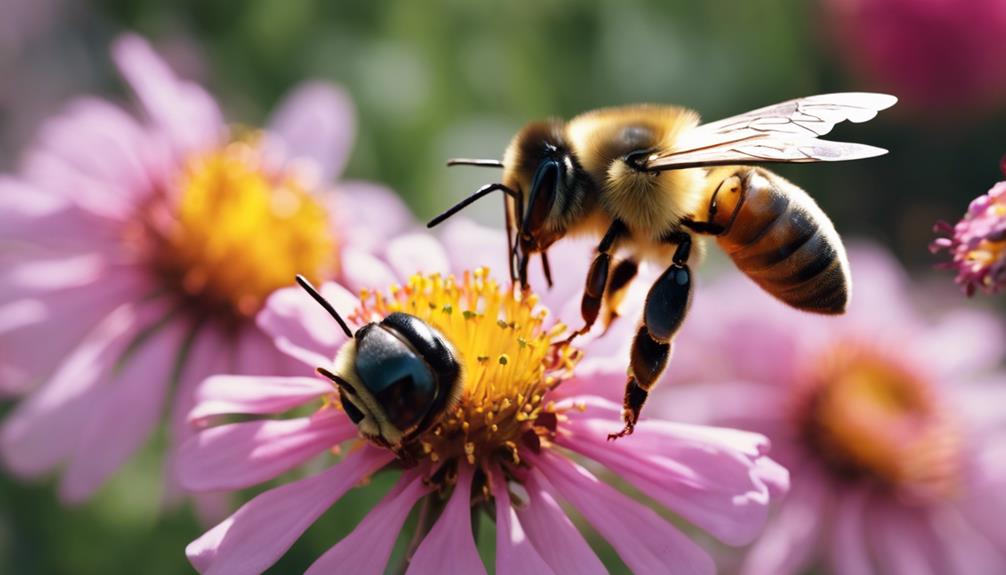
When considering the relationship between worker bees and honey bees, it becomes evident that their collaboration is essential for the overall success of the colony.
- Worker bees, as all female bees, take on pivotal tasks within the hive that are crucial for its functioning.
- Honey bees, including worker bees, drones, and queens, rely heavily on the tireless efforts of worker bees.
- The tasks performed by worker bees, such as nursing larvae, foraging for food, and guarding the hive, are indispensable for the colony’s survival.
- Worker bees are instrumental in honey production and play a key role in pollination, benefiting not just the hive but also the ecosystem.
- The synergy between worker bees and honey bees exemplifies the interconnectedness and interdependence within a thriving bee colony.

Roger Thomas is a seasoned beekeeper and hive architect with a deep-seated passion for sustainable living. His fascination with bees has shaped his professional career, giving him practical and theoretical expertise in bee behavior, colony health, and optimal hive conditions. Roger’s technical skills shine in his bespoke hive creations that cater to the specific needs of diverse bee species, while his sustainable practices promote environmental balance and the wellbeing of the bee population.
As he continues his journey in beekeeping, Roger has become a dedicated advocate for responsible practices and an insightful educator in his field. His posts aim to inspire new beekeepers, underline the importance of sustainability, and showcase the remarkable contribution bees make to our ecosystem. Roger invites you to join him as he delves into the world of bees and the rewarding, honey-sweet art of beekeeping.
